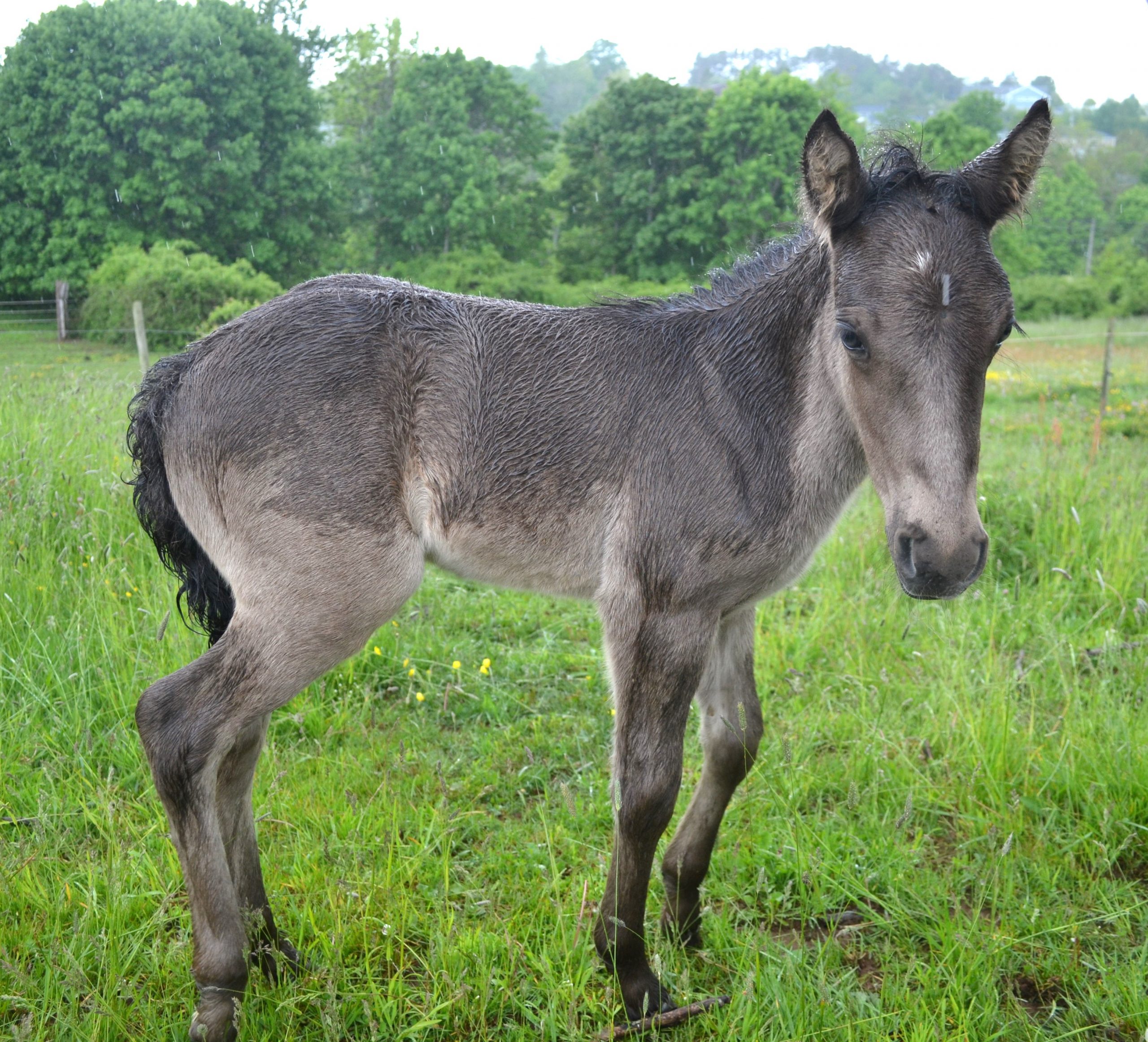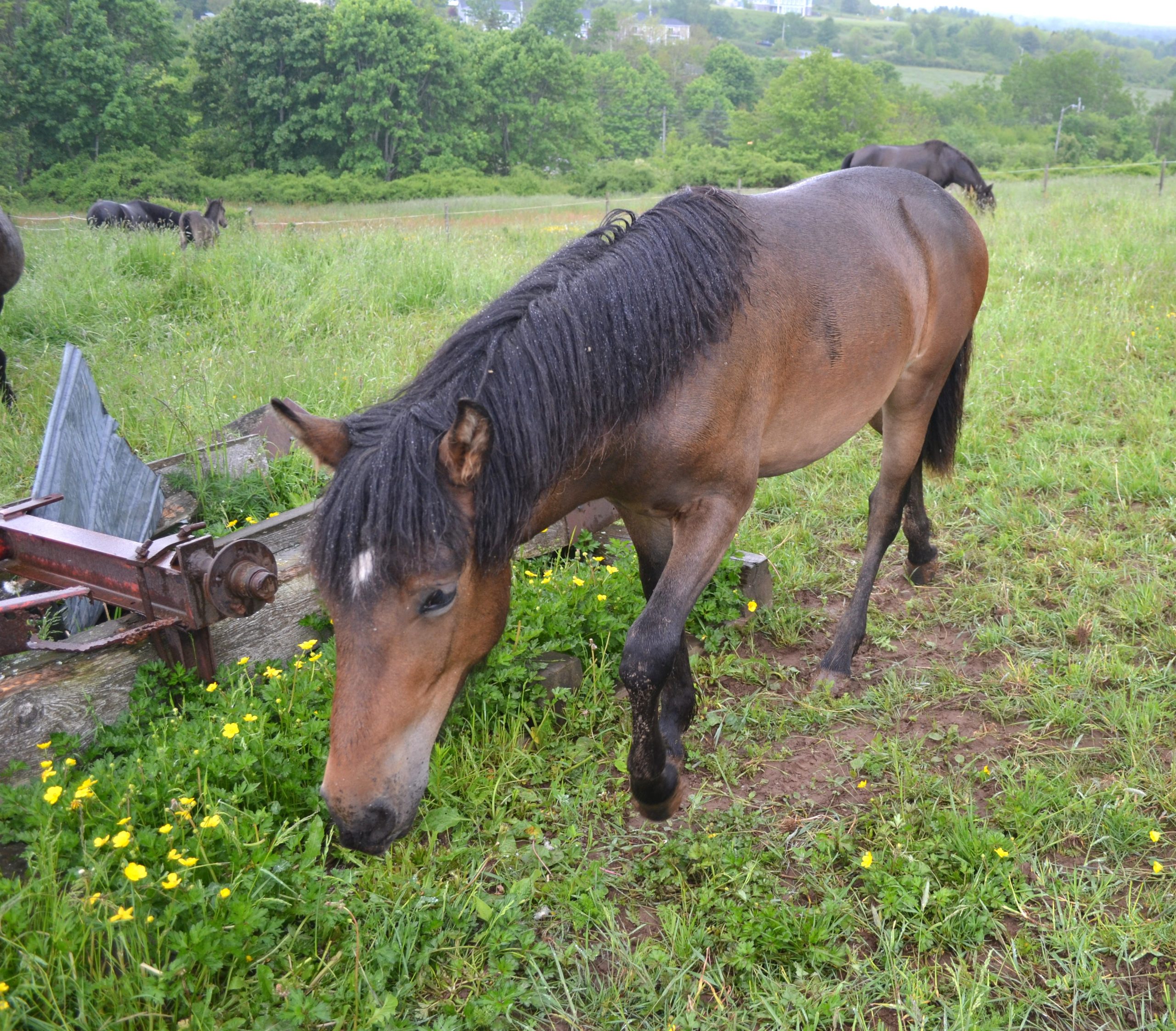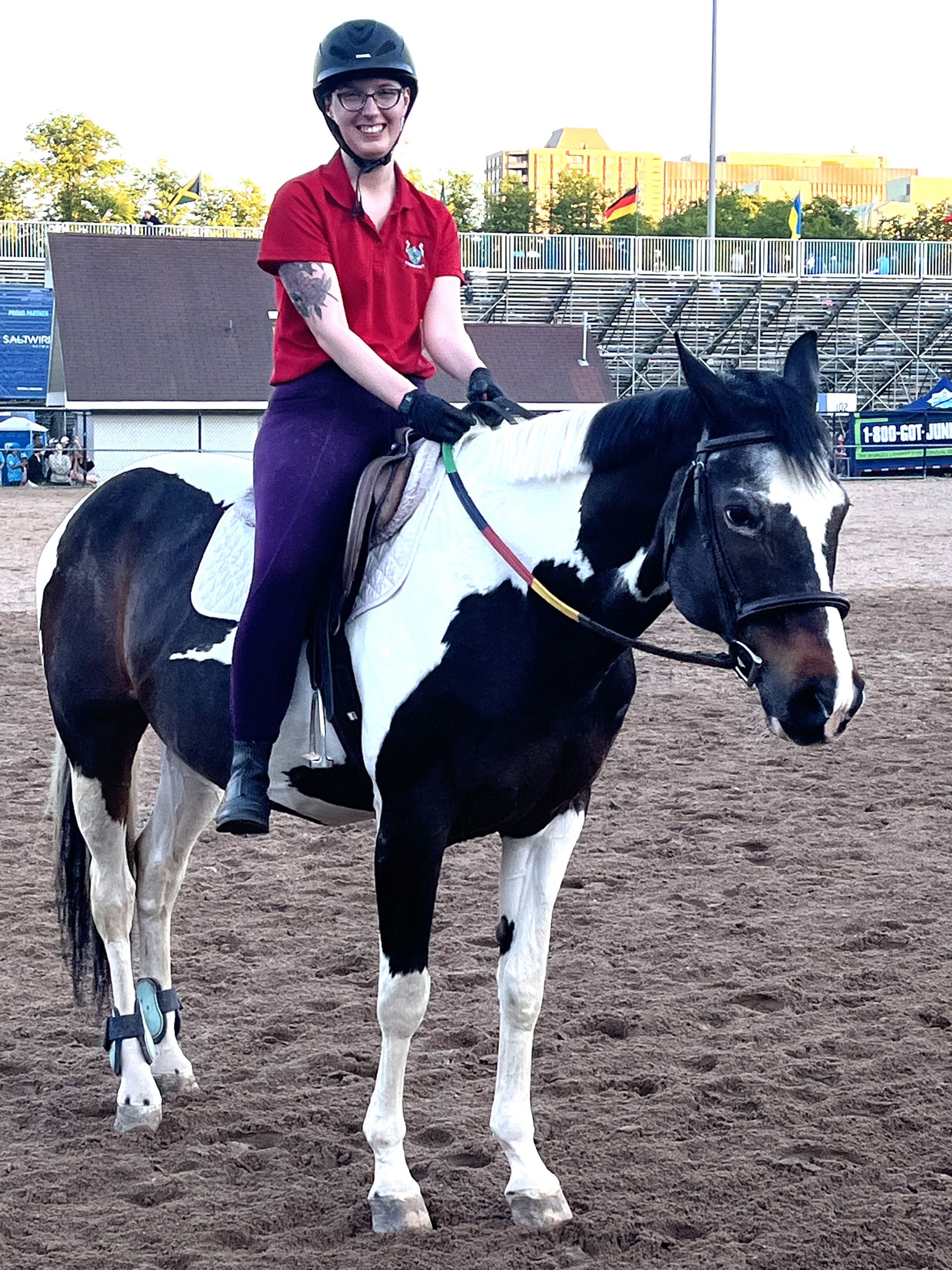
Even on a rainy afternoon in Nova Scotia, the Newfoundland Ponies on Lisa Partridge’s farm – P&P Pastures Homestead – are eager to greet. There are several Newfoundland Ponies on site – a 200-acre property in the town of Lunenburg on the province’s plush South Shore – including a new foal named Lorimer. He sniffs at a camera lens with curiosity while his mother, Fancy, remains nearby. Queenie, a pregnant mare, grazes in the same paddock along with Sass. Kitchen Party nibbles on my raincoat sleeve. Elsewhere, a male yearling named Kiaron shares his space with an adult stallion, Scrunchion. Little Buddy, Drifter, and Loaf (a Newfoundland Pony mix) round out the Newfoundlanders currently in Partridge’s care.
Seeing these animals serves-up hope that an endangered breed might once again thrive. After all, the Newfoundland Pony is tougher than it looks.
Anyone who has spent a winter in Newfoundland and Labrador well knows what early settlers learned long ago: while it is a beautiful place, it is not for the faint-of-heart.
According to Andrew F. Fraser’s comprehensive book on the Newfoundland Pony (first published in 1992), these animals were hardy, strong, and adaptable. They were also essential. Ponies first came to the province in the early 1600s when John Guy imported Dartmoor and Exmoor ponies. By the 1930s, ponies outnumbered larger horses in Newfoundland by more than 3,000.
“Ponies were as members of each working family,” wrote Fraser. A veterinarian and biologist who grew up in Scotland, Fraser made Newfoundland and Labrador his home for the latter part of his life. He noted that “for life in Newfoundland, with its hard environment, these horses could not be soft.” That is not to say that the ponies were aloof, however. Their trusting and friendly disposition is part of what made them appealing to humans as well.
“The Newfoundland Pony is our living heritage,” says Libby Carew, board member and councillor-at-large for the Newfoundland Pony Society. “That is something that we never want to lose, and it is something that we need a lot more people involved in helping us preserve.”

Fraser helped to form the Newfoundland Pony Society (NPS), which was officially recognized as a non-profit in 1981. Although he passed away in 2011, the society lives on. Based in St. John’s, NL, the NPS is responsible for the protection and preservation of the Newfoundland Pony. “What we are trying to do now is really advocate for the pony so that it can survive here and be here for future generations to enjoy,” notes Carew.
When we picture a pony today, we probably imagine a cute little animal with a child on its back at a county fair. It is easy to forget the days when our equine companions were first and foremost workers: our allies in survival. They worked the land and provided transportation. The human/equine relationship goes back many centuries, and as Fraser wrote, “No greater race of horsepeople inhabited ancient Europe than the Celts.”
Horses and ponies are still used in competition as well as for leisure and companionship, but since humans shifted from our reliance on animals to a reliance on machines like motor vehicles, we have neglected to protect some of our old friends.
Friends such as the Newfoundland Pony.
“The Newfoundland Pony is referred to as the working engine of rural Newfoundland,” shares Carew. “Most families had a Newfoundland Pony, and the pony was involved in day-to-day life.”
Newfoundland Ponies pulled ploughs and mowing machines, and they carted caplin and seaweed from the beaches so it could be used as fertilizer. Of course, the ponies were also employed for travel and recreational riding.
“The Newfoundland Pony was used for midwives to get to one community or another, and many a bride was brought to her wedding day,” adds Carew. “A pony would have pulled the carriage to get to the church, so they are quite an important part of our fabric.”
While thousands once inhabited the island of Newfoundland, the Newfoundland Pony currently exists in mere hundreds.
The Newfoundland Pony Society estimates that there are now 500 of these ponies worldwide. (This number is imprecise, since NPS counts on owners to report ponies to the registry, as well as to report their deaths.)
Multiple factors led to the breed’s decline. Modern farm equipment and all-terrain vehicles, for instance, took on jobs once occupied by the Newfoundland Pony. “ATVs don’t need farrier services. You don’t need to feed them,” explains Carew. Additionally, the province brought forth anti-roaming animal by-laws in the 1970s. Up until that point, ponies had been permitted to run freely in the summer months. The new regulations caused pastureland to become more expensive, and anyone who wanted to own ponies would have had to pay for fences to keep them contained.

“That’s when horse traders hit the province and, I guess, took advantage of a bad situation.”
Many ponies were sold at auction and slaughtered. By 1992, there were less than 150 Newfoundland Ponies of breeding age. The possibility of extinction loomed. In 1996, the Government of Newfoundland and Labrador passed the Heritage Animals Act, which mandated NPS to maintain a registry of Newfoundland Ponies. These days, volunteer Kelly Power-Kean is responsible for that registry.
“We do offer a DNA testing grant to anybody who suspects that they do have a Newfoundland Pony,” says Power-Kean.
Unlike some horse breeds, the Newfoundland Pony does not have a uniform appearance. By way of example, look at Lisa Patridge’s ponies: Scrunchions has a long, flowing mane and he doesn’t have that stereotypical “stocky” build. Buddy, on the other hand, is much smaller and has more resemblance to a Welsh Mountain Pony. Such differences once contributed to the myth that Newfoundland Ponies were simply “mutts.” In fact, the historic breed has its roots in the British Isles. It descended from various types of the Mountain and Moorland ponies, including the Dartmoor and Exmoor. A proper equine enthusiast could pick out the telltale characteristics of a Newfoundland Pony, such as its narrow chest and close-set forelegs.
“The Newfoundland Pony is a walking genetic time capsule,” explains Emily Aho, the executive director of the Newfoundland Pony Conservancy Center in Fitzwilliam, NH. She pushes back against efforts to “modernize” or alter the breed in ways that would be to its detriment. “Nature knows better than we do,” she says.
Aho fell into Newfoundland Pony conservation by chance after buying a Newfoundland Pony mix named Tansy. It was her first experience with the breed, but it would not be her last. “They take you down a trail. That’s what they did to us – they took us down this trail and we are still following them.” Today, Aho educates people on the pony’s history, as well as teaching them how to responsibly breed and care for them.
According to the Newfoundland Pony Society website, at least 19 Newfoundland Pony breeders are scattered throughout Canada and even the United States. People like Aho and Partridge connect with other breeders and often work together: Partridge’s Drifter and Sass, for example, are “on loan” from Minnesota for breeding. The majority of Newfoundland Ponies currently live outside of Newfoundland and Labrador, and so when Partridge sells a pony, she prioritizes Newfoundland buyers. Aho’s Conservancy Center also advocates for the breed to live in its homeland.
“We are all about ponies in Newfoundland. We want that to grow. It was the island that made that pony.”
 Back on The Rock, the Newfoundland Pony Society is working to restore habitat for the pony. In 2018, the Society secured a 50-year lease from the provincial government for 25 acres of Crown land. They kicked off a fundraising campaign the following year, with the goal to create the Newfoundland Pony Heritage Park and Pasture. Last summer, NPS opened the pasture in Hopeall, NL. More than 700 visitors came to see the ponies staying there. NPS is continuing to fundraise, and the hope is that – eventually – the pasture will be home to a small breeding program. “There’s something that’s good for the soul – just being around these animals,” says Carew.
Back on The Rock, the Newfoundland Pony Society is working to restore habitat for the pony. In 2018, the Society secured a 50-year lease from the provincial government for 25 acres of Crown land. They kicked off a fundraising campaign the following year, with the goal to create the Newfoundland Pony Heritage Park and Pasture. Last summer, NPS opened the pasture in Hopeall, NL. More than 700 visitors came to see the ponies staying there. NPS is continuing to fundraise, and the hope is that – eventually – the pasture will be home to a small breeding program. “There’s something that’s good for the soul – just being around these animals,” says Carew.
Twenty-six Newfoundland Pony births were recorded in 2022. As of June, 2023, about 14 have been born this year, with others still on the way. These numbers, at first, seem to pale in comparison to the population that once inhabited Newfoundland. However, nothing can be done about the past. The foals represent the future. In speaking with people about the Newfoundland Pony, the overwhelming takeaway is a feeling of optimism: despite the hurdles, there are still a great deal of people who love, admire and advocate for the breed.
“We could not have survived without them,” says Carew. “We feel, as the Pony Society, we owe them a debt that we can never repay.” ~ Story by Rebecca Dingwell
Listen to the article here;




















Leave a Comment